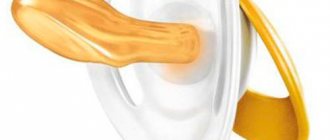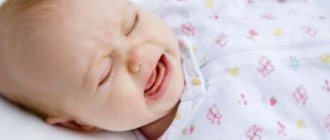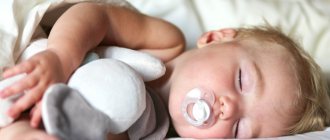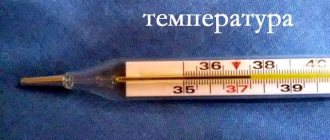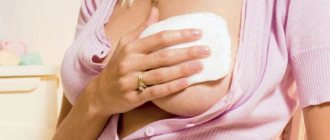The pacifier helps the baby fall asleep, calms the baby and completely satisfies the sucking reflex. In addition, a bottle with a nipple makes it easy for your baby to get formula or breast milk. It is important to choose and use a pacifier correctly and care for the product. The health and safety of the baby depends on this. Caring for your pacifier includes regular washing, sterilization and replacement. In this article, we'll look at how often to change your bottle nipple or pacifier. Let's learn how to choose the right product and how to care for it.
How often to change a pacifier
Over time, each pacifier wears out as the product undergoes regular sterilization. In addition, the baby constantly sucks and chews. As a result, cracks, bubbles and holes appear on the product. In this case, change the pacifier immediately! Cracks and holes collect bacteria, which, if they enter the baby's body, can cause various diseases. In addition, damaged material is easier to tear; as a result, a baby can tear off a piece of rubber, latex or silicone with his teeth and swallow it!
The frequency of replacing bottled juice or a regular pacifier for sucking depends on the degree of wear and regularity of use, and on the type of product. Today, manufacturers offer nipples of various shapes and materials. Nipples are made of latex, silicone or rubber.
| Pacifier | Characteristic | When to change |
| Latex | Soft and comfortable, elastic, suitable for teething, but cannot withstand high temperatures, quickly deforms and loses shape, may develop microcracks | Every 2-4 weeks |
| Silicone | Durable and durable products, elastic, can withstand boiling, but the material is easy to bite through, and the rigid and tight structure negatively affects the condition of the teeth, so it is not recommended for teething | Every 3-5 weeks |
| Rubber | The most durable product that can withstand boiling and does not tear, is perfect for teething, but has a characteristic specific odor and sometimes causes diathesis | Every 4-8 weeks |
If you notice that the pacifier has lost its shape, is torn or deformed, has darkened or changed color ahead of schedule, be sure to replace the product with a new one! It is better to have several different nipples so that if necessary, you can replace the pacifier with a new one. By the way, pediatricians advise using different pacifiers for the bottle and for sucking.
Harm to a baby from pacifiers
Arguments against pacifiers:
- The pacifier can harm breastfeeding. The more often and longer the baby suckles, the more milk is produced. A pacifier can significantly reduce the time it takes to attach to the breast, which means there will be less milk
- Also, the pacifier can ruin the formation of the bite, as orthodontists say. When sucking the breast, the bite is not disturbed, this has been proven by scientists
- The pacifier is a source of inflammatory diseases of the oral cavity (for example, stomatitis), as well as ear inflammation (otitis media). Care must be taken to maintain pacifier hygiene
- Psychologists say that with the help of crying, a child gets rid of the negative emotions that overwhelm him. If you do not give these emotions an outlet, that is, constantly soothe the child with a pacifier, serious psychological problems may arise.
- Weaning off the pacifier can be very painful for both the baby and the mother.
There are opinions for and against pacifiers
Types of nipples by shape
- Oval pacifiers resemble the shape of a woman's nipple and are universal products;
- Round cherry pacifiers are classic products with a ball at the end, which are shaped like a light bulb and are suitable for babies without developmental disabilities;
- Anatomical teat droplets with a slightly flattened end are used for children with an underdeveloped lower jaw;
- Orthodontic nipples are distinguished by an angled and flattened tip, forming a correct bite and improving the functioning of the maxillofacial apparatus.
What kind of nipples does a newborn need?
A few decades ago, parents did not have the same choice of pacifiers as they do now. Rubber nipples on the shelves - that's all the choice. Now there is plenty to choose from.
Nipples are made from the following materials:
- Silicone
- Latex
Silicone nipples are transparent. Silicone does not absorb foreign odors, is well sterilized, and elastic. These nipples hold their shape for a long time and are hypoallergenic. Silicone pacifiers are more expensive than latex ones, but they also last a little longer.
Latex or rubber nipples are yellow. They are much softer than silicone. They warm up in the mouth and can resemble a mother's breast to her baby. Their disadvantage is that they wear out quickly, cracks quickly appear on the surface, and the walls stick together.
According to their structure, nipples are:
- Regular
- Anatomical
- Orthodontic
A regular nipple has a round base, reminiscent of a woman's nipple. Anatomical - flattened, suitable for newborns. The orthodontic pacifier is made in the form of a drop and reduces the risk of developing malocclusion.
Nipples: regular latex and orthodontic silicone
The design of modern nipples is out of the question. There are all sorts of them. Different colors and shapes, designs and decorations. When choosing a pacifier for your child, remember that small decorations can get into the respiratory tract. Choose a high-quality and reliable pacifier.
Interesting: The most expensive pacifier in the world is valued at $17,000. It is made of silicone, platinum and decorated with 280 small diamonds.
The world's most expensive pacifier with diamonds
Types of nipples based on material of manufacture
Latex pacifiers are very soft and elastic, making them easy and comfortable to suck on. But the natural rubber from which it is made sometimes causes allergies. In addition, latex cannot withstand repeated boiling and may burst or crack when exposed to high temperatures.
Therefore, to sterilize a latex pacifier, a cold method using soluble antiseptic tablets is chosen. Latex products are recommended for use for weak and premature babies, for newborns and babies in the first three months of life. This pacifier is changed at least once a month.
Silicone pacifiers can withstand high temperatures and repeated boiling. These are elastic and elastic products without odor. Silicone is a more durable, resistant and safer material than latex. But at the same time it is also tougher, which can damage the first baby teeth. Therefore, it is better to use the product before teething. Durable silicone nipples are changed every 1-1.5 months.
Rubber pacifiers are a suitable option for babies who are starting to teethe. Rubber is durable and elastic, so kids can easily chew or gnaw on the material. Due to this, they scratch the teeth and soothe itching, while the strong rubber does not tear and can withstand repeated boiling. But be careful, as such material sometimes causes diathesis in the baby. In addition, rubber pacifiers are gradually being phased out, so such products are not so easy to find today. This pacifier needs to be changed approximately once a month.
Manufacturers
How many bottles do newborns need when breastfeeding, and how often should they be replaced with new ones? This depends on the quality of the product: if the product is cheap, you will need to replace it with a new one 1-2 times a month. When choosing a container for feeding your baby, you need to pay attention only to high-quality models.
They are produced by companies such as:
- Born Free;
- Tommee Tippee;
- The world of childhood;
- Nuk;
- Canpol Babies;
- Dr. Brown;
- Philips Avent.
To choose a safe and high-quality product, you can read the rating of bottles for newborns.
However, in most cases this does not have to be done, since the above manufacturers produce benign products that cannot harm the baby’s health.
To avoid problems with the child’s health, you should not buy cheap products (especially if they are made of plastic), since the material may contain a dangerous substance, Bisphenol A, which, when heated, releases harmful toxic substances that can harm the health of the newborn.
How to choose and use a pacifier correctly
- In the first months of life, latex or silicone nipples are chosen for the baby, and with the appearance of the first teeth, you can switch to rubber ones. If you don't want to use rubber, opt for latex when teething;
- Before using special orthodontic or anatomical products, be sure to consult your pediatrician;
- The pacifier should fit the child's bite and be comfortable. Check that the restrictive ring does not rest on the baby’s nose;
- Choose pacifiers according to your baby's age. The manufacturer indicates on the packaging the size that corresponds to a certain age. As a rule, they produce products for children from birth to three months, 3-6 months and older than six months. However, each manufacturer has its own division;
- If you want to maintain breastfeeding, give your baby a pacifier as rarely as possible and do not introduce your baby to a pacifier until you can establish breastfeeding! When mixed feeding, in this case, feed the baby with a teaspoon, and not from a bottle with a nipple;
- Do not give your baby a pacifier too often and for a long time, even with full artificial feeding. Children get used to the pacifier and then cannot calm down or fall asleep without it. The famous pediatrician Komarovsky advises not to give a pacifier before bedtime, but to rock the baby or breastfeed;
- Ensure proper care and cleanliness of the pacifier. Sterilize and wash the product regularly. If the pacifier falls, rinse the product and pour boiling water over it. Do not lick under any circumstances!;
- Be sure to sterilize pacifiers and bottles before first use. And then you can only pour boiling water over the products;
- Check the product for integrity, do not give your child a torn pacifier or a pacifier with cracks, holes, bubbles and other, even minor, defects!;
- Do not dip the pacifier in sugary foods or drinks before giving it to your baby. This can cause digestive disorders and allergies, deterioration of the condition of teeth and gums, the appearance of caries, or provoke even greater addiction to the pacifier;
- Start weaning your baby off the pacifier before he is a year old, otherwise it will be more difficult later. How to wean your baby off the pacifier, see here.
Rules for using a baby pacifier
Before using a pacifier, you must boil the item or process it in a special sterilizer. It is very important not to hang the pacifier from a string around the baby's neck, because there is a high risk of suffocation. There are various fasteners available to attach the pacifier to the baby's clothes.
It is recommended to use the pacifier as needed. After use, it is important to store it dry in a special container or under a protective cap. During the day, it is recommended to treat the pacifier with boiling water at least once a day and whenever it becomes dirty.
Mothers are strictly prohibited from licking the pacifier before giving it to the child!
It is recommended to change the pacifier if it develops cracks or other defects. It is also important to observe the service life of the pacifier, which is always indicated on the packaging. The average lifespan of latex nipples is about 3 weeks, and silicone ones - up to 5.
How to sterilize a pacifier
Before sterilization, thoroughly wash the pacifier using hypoallergenic detergents, soapy water or baking soda. Baking soda is safe for children and effectively removes dirt, stains and grease. For soap solution, use neutral liquid soap. After washing, rinse the product in running water and leave to dry on a towel without wiping. Then sterilize the pacifiers using any method.
The most popular option is boiling in a pan of water. To do this, place the products in boiling water for two to three minutes. Nipples are sterilized separately from bottles! You can also sterilize products in a microwave, double boiler or slow cooker. In the first case, place the nipples in a container with water, close the lid tightly and microwave for three to four minutes.
To sterilize in a double boiler or multicooker, place items in the upper compartment of the device, and bottles in the main container and sterilize the baby dishes using the “Cooking” or “Steam” mode for about ten minutes. If you are using latex pacifiers, choose the cold sterilization method using antiseptic disinfectant tablets. Dissolve the tablets in water according to the instructions and place the washed pacifiers in the container for a few minutes.
Today you can also use a special steam electric sterilizer to disinfect dishes, into which you pour water, place the products and select the desired processing mode.
This device can hold up to six items at a time. We looked at how to properly sterilize pacifiers, and how to sterilize baby bottles, see the link. Subscribe to our VKontakte group
Benefits of pacifiers for babies
Arguments in favor of a pacifier:
- The pacifier calms the baby if he is teething or has a fever
- You can calm a crying baby with a pacifier during a walk or in a clinic
- A hungry baby will also calm down for a while if he is given a pacifier. At this time, the mother will be able to prepare the baby's formula.
- Scientists say pacifier reduces risk of sudden infant death during sleep
- With the help of a pacifier, the child quickly and calmly falls asleep
When you can and cannot give your baby a pacifier: tips and reviews
Kira : “My child did not take any pacifiers. I bought several types - orthodontic, silicone, latex. My daughter just spat them out and that’s it. In the end, I abandoned this idea. Although I understand that in some situations a pacifier could calm the baby. But it also has its advantages: we didn’t have to painfully give it up. I look at my friends, either stomatitis or hysterics without a pacifier. We've been passed over."
Anna : “I believe that the pacifier does not affect the bite in any way. Mine is incorrect, but my sister’s is normal. Although we both sucked the pacifier.”
Diana : “We are with a pacifier. The child is crying, he gives him a pacifier, that’s it - the child is calm. Of course, it needs to be sterilized and changed constantly. Then there will be no sores in your mouth. We are 9 months old and haven’t given up yet.”
Each parent has the right to decide for himself whether his child needs a pacifier. When making a decision, consider the character and needs of your baby, because all children are different. And most importantly, do not give in to the persuasion of advisers if you feel and see that this does not benefit the child. Remember, only parents are responsible for the health and well-being of the baby.
